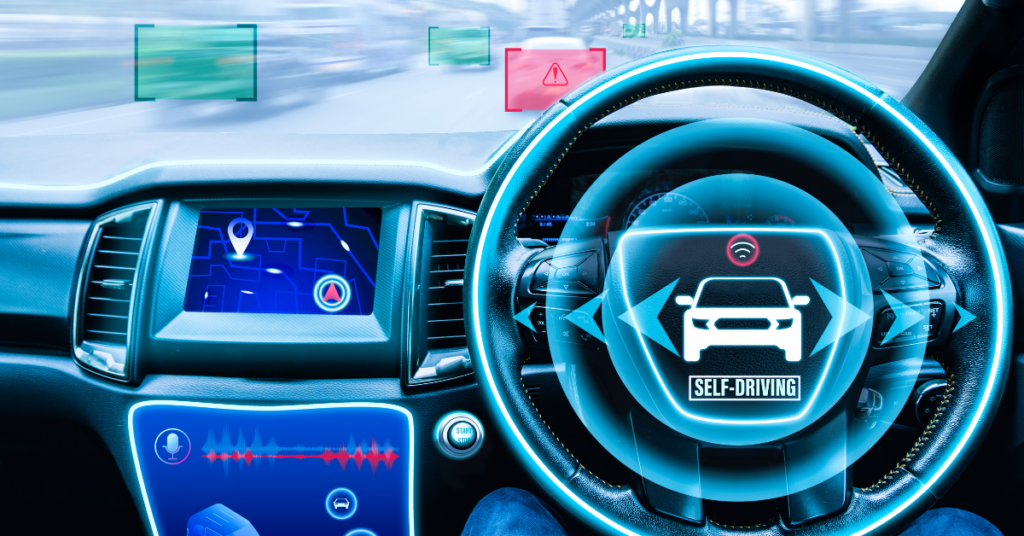Automotive Cybersecurity: Top 10 Examples for Ensuring Safety.

Digitally driven cars, once confined to the fictional world of James Bond and sci-fi movies, have now become a part of our everyday lives. These advanced vehicles, reliant on digital infrastructure, provide improved navigation and control but also introduce significant security challenges. An Upstream report shows that in 2022, there was a 380% increase in automated Application Programming Interface (API) attacks. This stark reality underscores the importance of automotive cybersecurity in safeguarding our cars. Let us, therefore, delve into the various facets of automotive cybersecurity, exploring the spectrum of threats and measures to mitigate these risks.
In this blog, you will learn:
- What is Automotive Cybersecurity?
- Why is Automotive Cybersecurity Important?
- What are the Different Types of Cybersecurity Attacks?
- Examples of Automotive Cybersecurity Solutions
What is Automotive Cybersecurity?
Automotive cybersecurity fundamentally concerns building a digital fortress that is tasked with defending our modern vehicles from cyberthreats. The rapid advancement in automotive technology has equipped cars with high-tech features like interactive screens, GPS systems, and even self-driving capabilities. This technological leap, however, also paves the way for cybercriminals to launch sophisticated attacks. Thus, as vehicles transform into more complex, tech-laden entities, their vulnerability to cyber risks such as remote carjacking or Engine Control Unit (ECU) hacking increases. Therefore, in automotive cybersecurity, the focus is on deploying defensive strategies such as robust operating systems, data encryption, and stringent protocols to block unauthorized access to a car’s electronic innards and shield vital components like steering and braking systems from the dangers of remote hacking.
ALSO READ: Staying Ahead of Cyberthreats: 5 Latest Trends and Best Practices
Why is Automotive Cybersecurity Important?
The criticality of automotive cybersecurity in today’s interconnected world is undeniable for numerous reasons:
1. Safety Concerns
Automotive cybersecurity is essential in shielding vital vehicle systems, such as brakes or steering, from cyber intrusions. As a matter of fact, this protection is crucial in safeguarding not only the driver but also passengers and pedestrians from potential harm.
2. Data Protection
As vehicles increasingly resemble computers on wheels, they accumulate and transmit sensitive data such as real-time location. Vehicle cybersecurity plays a pivotal role in defending this information, thus ensuring both the privacy and security of car users.
3. Protection From Theft and Tampering
It is important to defend your car from cybercriminals who might exploit vulnerabilities to either hijack vehicles or deactivate anti-theft systems remotely. This includes defending against tactics like manipulating vehicle speed, which could lead to dangerous situations.
4. Maintaining Consumer Trust
With the growing prevalence of connected vehicles, sustaining confidence in their cybersecurity is of utmost importance. This involves not only protecting the vehicle but also safeguarding the user’s personal information, such as social security numbers, addresses, and credit card details.
5. Financial Implications
The absence of a robust vehicle cybersecurity system can result in significant financial consequences, including costly repairs, recalls, and legal challenges for manufacturers. It also includes the potential theft of personal information.
ALSO READ: What is Pretexting in Cybersecurity? Top 7 Techniques Used by Attackers
What are the Different Types of Cybersecurity Attacks?
Remember the Cherokee Jeep hack incident from 2015, when security researchers remotely hacked a Jeep driven by a journalist, took control of its air conditioning, radio, windshield wipers, and finally, its transmission system on a highway? Incidents like this highlight that the rapidly evolving amalgamation of the automobile industry with digital technology comes with a host of security threats. These threats challenge the integrity of vehicle systems and pose significant risks to user safety and data security. Different types of automobile-related cyberthreats include:
1. Attacks on Critical Infrastructure
This type of attack directly targets a car’s steering or brakes. For instance, a hacker might manipulate the brake system, leading to potential accidents. Such attacks endanger the driver and pose a significant risk to public safety.
2. Exploiting Software and System Vulnerabilities
Cybersecurity for cars must constantly evolve to address the vulnerabilities in a car’s software. Hackers can exploit these flaws, affecting critical functionalities like navigation systems or safety features. An example would be a breach that disables airbags or affects the vehicle’s GPS, leading to misdirection or malfunction.
3. Network Attacks
These involve manipulating the data transmission within automotive systems. Hackers might intercept or alter the communication between different parts of the vehicle, leading to malfunctions. For instance, a network attack could result in the false triggering of warning lights or the disruption of a vehicle’s internal communication system.
4. Cloud-Based Attacks
Modern vehicles heavily depend on cloud services for updates and data storage. As a result, automotive services have become prime targets for cyberattacks. A cloud-based attack can corrupt software updates or leak sensitive user data stored in the cloud, such as location history or personal preferences.
5. IoT Attacks
The integration of the Internet of Things (IoT) in vehicle cybersecurity presents new challenges like software hacking or malfunctioning. Cars connected to external devices or networks can be vulnerable to breaches. An example is a hacker gaining access to a car’s system through a connected smart device, like a phone or home automation system, and then manipulating car functions or stealing data.
ALSO READ: Want to Become a Cybersecurity Consultant? Learn the Steps Required
Examples of Automotive Cybersecurity Solutions
1. Encryption
This involves using advanced algorithms to protect data transmission both within the vehicle and in its communication with external networks. For example, encryption can secure the data exchanged between a car and its manufacturer’s servers, ensuring that sensitive information like location and user preferences remains confidential.
2. Firewalls
These act as a barrier, monitoring, and managing data flow to and from the vehicle’s network. Firewalls can prevent unauthorized access, ensuring that only legitimate communication passes through.
3. Intrusion Detection and Prevention Systems (IDPS)
These systems provide real-time monitoring of vehicle networks, swiftly detecting and blocking any suspicious activities. For instance, an IDPS might identify an unusual request to access the car’s control system and immediately block it, thus preventing potential harm.
4. Secure Boot and Firmware Verification
This ensures that only authorized and verified software runs on vehicle control units. By doing so, it prevents malicious software from being installed, similar to how a smartphone only allows verified apps to be downloaded and run.
5. Access Control
Implementing robust authentication processes is crucial to prevent unauthorized control. This might involve biometric verification or multifactor authentication to ensure that only the rightful owner or authorized user can access the vehicle’s systems.
6. OTA Updates Security
Over-the-Air (OTA) updates are essential for the effective functioning of a vehicle’s software. Secure OTA updates involve encrypted data transmission and rigorous verification processes to ensure that updates are authentic and have not been tampered with.
7. Security Audits and Penetration Testing
Regularly evaluating systems for vulnerabilities is akin to conducting routine health checks. These audits and tests help identify potential weaknesses and prevent exploitation by attackers.
8. Cybersecurity Training and Awareness
Educating industry professionals on best practices is akin to training soldiers for battle. It equips them with the knowledge and skills necessary to identify and respond to cybersecurity threats effectively.
9. AI and Machine Learning
Integrating AI and machine learning can significantly enhance cybersecurity for cars. These technologies can predict and identify new threats based on patterns and anomalies. It can be especially crucial for preventing cyberattacks on Connected and Automated Vehicles (CAVs).
10. Blockchain for Data Integrity
Utilizing blockchain technology can ensure the integrity and traceability of data transactions within automotive systems. This decentralized approach that blockchain platforms entail makes it nearly impossible for hackers to alter data undetected.
If you are looking to gain in-depth knowledge of automotive cybersecurity, consider joining Emeritus’ meticulously designed cybersecurity courses. These can help you become an expert in vehicle cybersecurity and fuel your career further.
Write to us at content@emeritus.org






